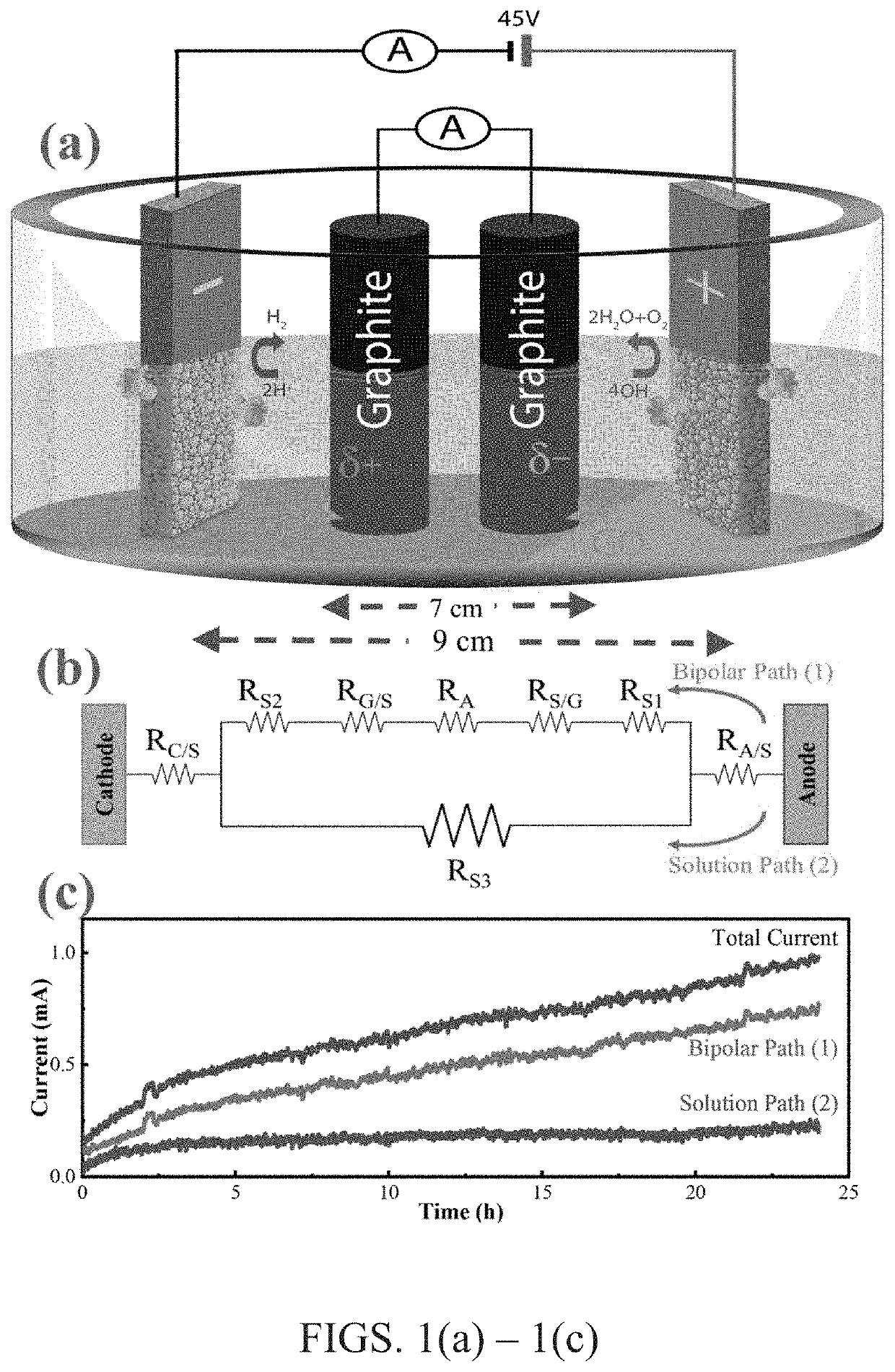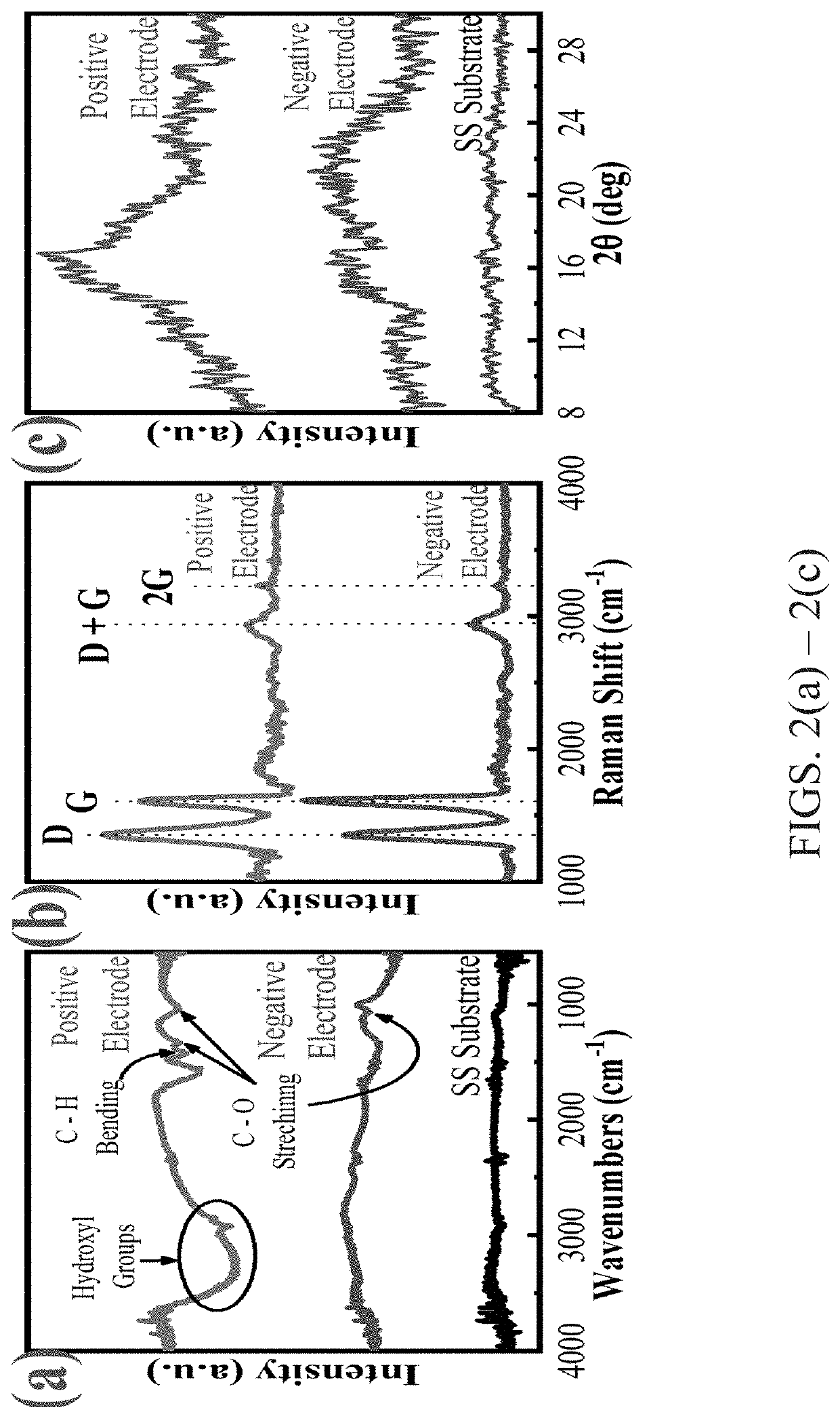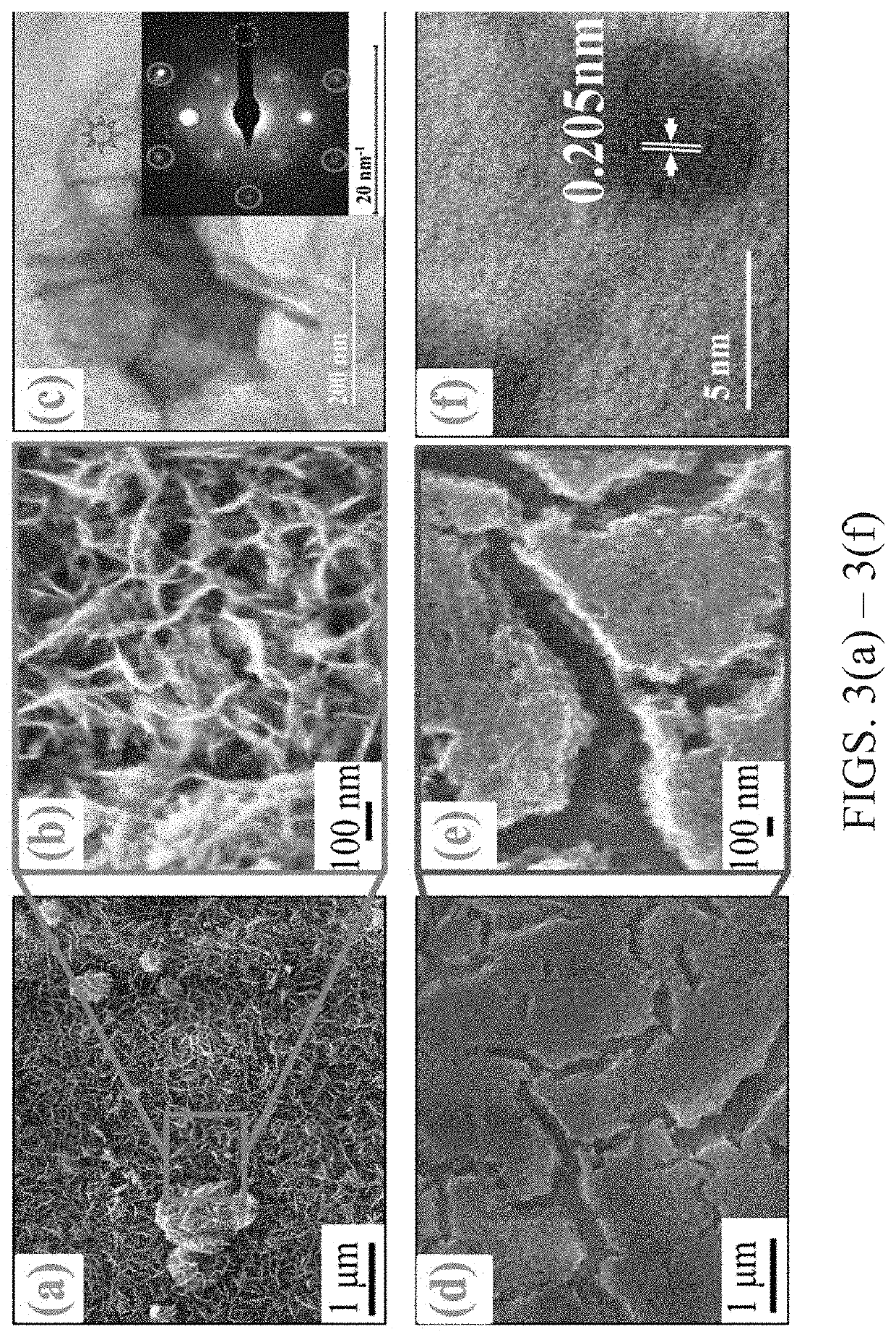Bipolar exfoliation and in-situ deposition of high-quality reduced graphene
a graphene and graphene technology, applied in the field of bipolar exfoliation and insitu deposition of high-quality reduced graphene, can solve the problems of reducing the popularity of many scale-up applications, introducing relatively high amounts of defects into the rgo sheet, and high cos
- Summary
- Abstract
- Description
- Claims
- Application Information
AI Technical Summary
Benefits of technology
Problems solved by technology
Method used
Image
Examples
Embodiment Construction
[0030]Embodiments of the subject invention use bipolar electrochemistry (BPE) concepts to provide a single-step and controllable process for simultaneously exfoliating a graphite source and depositing both graphene oxide and reduced graphene oxide layers on conductive substrates. A bipolar electrochemical cell can be used for a three-in-one deposition and can include two wired pieces of graphite to monitor the amount of current that passes through the bipolar electrode. Upon the application of the direct current (DC) voltage across the feeding electrodes (e.g., stainless steel feeding electrodes), several electrical processes take place, resulting in a three-in-one in situ exfoliation, reduction, and deposition in a single step and in an environmental friendly manner to form directly functional graphene-based electrodes.
[0031]While related art top-down approaches can successfully produce graphene oxide (GO) from graphite, which then necessitates further steps of reduction or reducti...
PUM
| Property | Measurement | Unit |
|---|---|---|
| DC) voltage | aaaaa | aaaaa |
| voltage | aaaaa | aaaaa |
| DC voltage | aaaaa | aaaaa |
Abstract
Description
Claims
Application Information
 Login to View More
Login to View More - R&D
- Intellectual Property
- Life Sciences
- Materials
- Tech Scout
- Unparalleled Data Quality
- Higher Quality Content
- 60% Fewer Hallucinations
Browse by: Latest US Patents, China's latest patents, Technical Efficacy Thesaurus, Application Domain, Technology Topic, Popular Technical Reports.
© 2025 PatSnap. All rights reserved.Legal|Privacy policy|Modern Slavery Act Transparency Statement|Sitemap|About US| Contact US: help@patsnap.com



